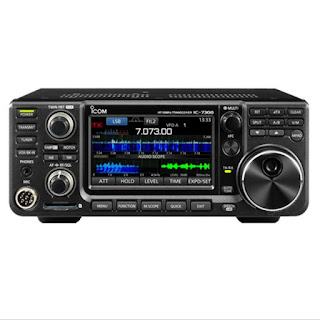Ham: without the sandwich
Ham: without the sandwich
My wife loves to call me "a bit of a ham", and I am proud now to say that she is right. Herein lies the story:
Somewhere around 1976 I was a boy scout when I attended a Jamboree Of The Air at the home of Lyle Patterson (VK2ALU) in Mt St Thomas in Wollongong. I think that the furthest contact was New Zealand, but most contacts that day were actually around the Illawarra. Nonetheless I was amazed by this concept. I could have my own transmitting station and talk to anyone, anywhere? Sign me up!
Turns out that in those days, it was not so simple and the idea of learning Morse Code, even at 5 words per minute scared me off. Yes, I could have gone for the "Z-Call", which did not have this requirement but I wanted to reach the world, and this meant HF. The idea got shelved because school got in the way (and having no money was also something of a concern) but I did get involved in building and restoring plenty of receivers over the years which followed, not to mention a dalliance with CB radio I still have most of that kit (a Sanyo and Uniden CB set, Yaesu FRG-7 and FRG-7700 plus an assortment of homebrew receivers). Listening is all well and good, but I still wanted to be able to get my own signals out there.
Take the plunge
Fast-forward to late 2020 and I'm not the long-haired boy scout I once was. I now have a daughter in the scouts as it happens, and I was messing about on the web one night and stumbled onto a trial exam for the Foundation license. Thankfully my career in electronics and technology in general gave me the background to exceed the pass mark, so I decided to look into it again.
The requirement to pass a Morse Code test was dropped somewhere in the 1990s, but I hadn't been paying attention. I was overjoyed! I jumped onto the WIA website and ordered Ron Bertrand's book "Your Entry Into Amateur Radio", which gives you all the information you need to pass the exam.
Then COVID-19 hit Sydney with a vengeance, and two training and exam weekends with Amateur Radio NSW came and went. At the time it looked like I would have to wait a while longer, but after 40+ years I guess what's another few months?
I also joined the Hornsby and Districts Amateur Radio Club (HADARC), and attended the first two meetings after the early lockdown ended, even though I was not able to join in on-air I will say they're a friendly and helpful bunch.
I've spent time eavesdropping on the weekly VHF and HF nets, and reminding myself how these things operate
In another piece of luck, I received mail from ARNSW who pointed me towards Fred Swainston's (VK3DAC) Silvertrain company. Fred runs a free online Foundation course over three evenings. Not only do you get all the technical background you're going to need but also a wealth of tips for the practical test as well as setting up and operating your station. Through these sessions, I was introduced to the team at VEA who offer remote examinations for all levels of Australian and US amateur licenses.
Soon afterwards, I was contacted by Bob Girdo (VK2RG) and after some waiting on Australian Maritime College who are responsible for licensing and examinations. I sat my test one Thursday night.
Handy hints for the exam
If you're sitting the Foundation exam, you are allowed a copy of the License Conditions Document (LCD). Print it out and highlight parts of the index where you will find the power limits and band allocations. You'll need them, and if you're like me it's easy to get flustered.
When doing the test remotely, if you have any radio gear such as a CB transceiver, set it up and be able to demonstrate how you would connect everything. This isn't essential, but it will boost your confidence that you know what you're doing. Don't worry if you don't have anything, just either refer to the pictures you'll download beforehand and possibly download an operating manual for a transceiver you like. Make yourself familiar with controls.
Do the practice exams. Silvertrain and Radio Electronics School both have samples. The tests are not difficult if you have done your homework. As the scouts say "Be Prepared".
Don't be afraid to ask questions of your examiner, especially if you're not clear on what you are being asked. The examiners are all amateur operators themselves and are doing this for the love of their hobby. I didn't quite grasp one of the questions Bob asked me, but he went out of his way then to phrase it for me. Not giving me the answer, but making sure I knew what I was being asked. More than fair.
The hardest part
Your exam sheet and forms get sent off to the AMC, and one week later I received an email:
Dear Christopher
Congratulations! You have been successful in your recent Foundation Examination - your certificate has been issued and you will receive it soon.
Please be advised that the AMC Amateur Radio Office has forwarded to the ACMA your:
- Application for an Amateur Non-Assigned Apparatus Licence
- Callsign Recommendation Form for the requested callsign of VK2MEI
The very next day I received email from ACMA telling me they have received my application, and I should expect to wait 15 business days.
Next stop is some Lockdown Window Shopping with Strictly Ham. Ross has been helpful with my silly questions and I am now the proud owner of an ICOM IC-7300.
Let the antenna articles begin!



Comments
Post a Comment